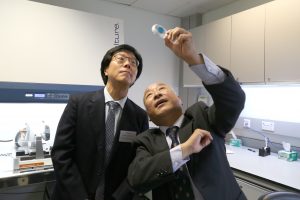Suggestions
Robert Sah
Professor of Bioengineering at University of California, San Diego
Robert Sah is a distinguished Professor of Bioengineering at the University of California, San Diego (UCSD).12 He has been a member of the bioengineering faculty at UCSD's Jacobs School of Engineering since 1992.2
Education and Background
Dr. Sah received his educational training from prestigious institutions:
- B.S. and M.S. in Electrical Engineering from MIT
- Sc.D. in Medical Engineering from MIT
- M.D. from Harvard Medical School12
After completing his post-doctoral research at Massachusetts General Hospital, he joined UCSD's Department of Bioengineering in 1992.1
Research Focus
Dr. Sah's research interests primarily revolve around:
- Biomechanics
- Mechanobiology
- Tissue engineering of cartilage, synovial fluid, and synovial joints
His ultimate goal is to improve the treatment, diagnosis, and prevention of diseases related to skeletal growth, injury, and degeneration, including osteoarthritis.1
Positions and Achievements
At UCSD, Dr. Sah holds several important positions:
- Professor in the Department of Bioengineering
- Co-director of the Center for Musculoskeletal Research
- Vice Chair of Bioengineering
- Director of the Cartilage Tissue Engineering Lab13
He has also been recognized as a Professor by the Howard Hughes Medical Institute.23
Awards and Honors
Throughout his career, Dr. Sah has received numerous accolades, including:
- Van C. Mow Medal from the American Society of Mechanical Engineers
- National Science Foundation Young Investigator Award
- American Academy of Orthopaedic Surgeons Kappa Delta Award (twice)
- Arthritis Foundation Hulda Irene Duggan Investigator Award2
His work on the "Mechanical Blueprint for Cartilage" has been cited as one of the Great Advances in Scientific Discovery in Disease and Injury Treatment by The Science Coalition.2
Robert Sah's contributions to the field of bioengineering, particularly in cartilage research and tissue engineering, have significantly advanced our understanding of joint physiology and paved the way for innovative treatments in orthopedic medicine.
